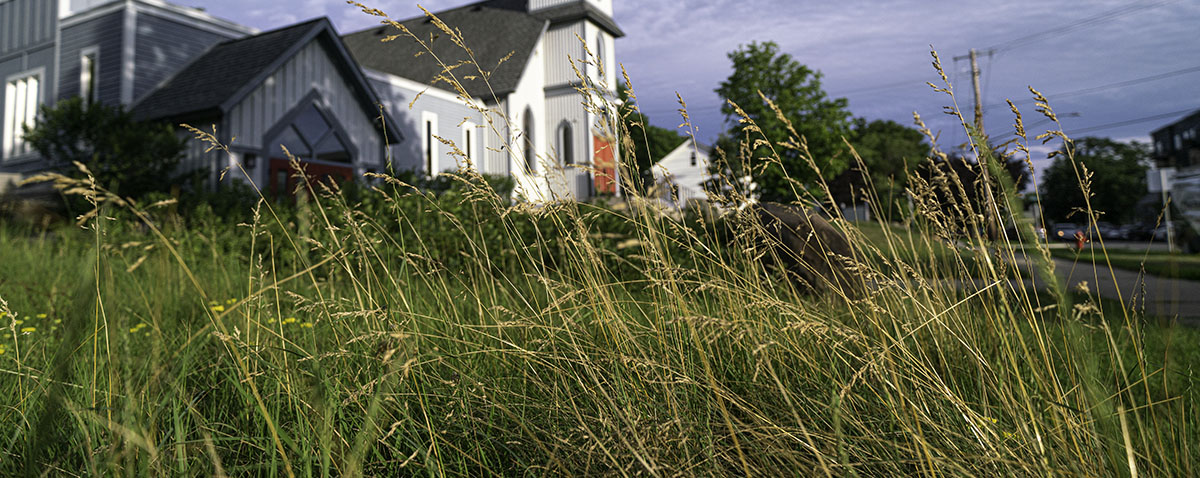Christians believe that God has blessed humankind with the responsibility of caring for the earth, preserving nature so that it can flourish and be fruitful, sustaining us and every living creature. So often, however, our relationship with nature is like our relationships with other people: broken, controlling, exploitative. We seek to control and profit from nature rather than living in balance with nature.
All Saints’ prairie restoration project is an experiment in restoring our relationship with our natural environment. Before the arrival of nineteenth century European settlers, the native environment in this region consisted largely of prairie — open grasslands with scattered trees. The prairie supported a rich diversity of plants and provided habitat for innumerable species of animals, insects, and birds. Settlement destroyed nearly all of the native prairie environment, leaving only scattered, disconnected remnants across Minnesota.
Conventional landscaping is often about control. In attempting to maintain a visual aesthetic imported from European formal gardens, we use fossil fuels and other chemicals to force grasses and bushes to grow in unnatural ways. We spend our valuable time and resources attempting to shape the natural environment to fit our preferences, and we create spaces that are inhospitable to other living creatures, while we generate air, water, and sound pollution that threatens our own health and well-being.
By restoring a portion of our property to native prairie, All Saints is offering an alternative approach to our stewardship of the earth, an approach that works with nature rather than trying to force it into our own image. We celebrate the beauty and abundance of the prairie ecosystem which flourished here when our congregation was founded in 1858.
All Saints’ prairie is a work in progress. It takes multiple years to reestablish the full diversity of a prairie, even on a small scale. In the first phase of our project, we have established the basic grassland. In the next phase, we’ll be adding a variety of native flowing plants, which will fill our prairie with color and visual interest throughout the growing season.


